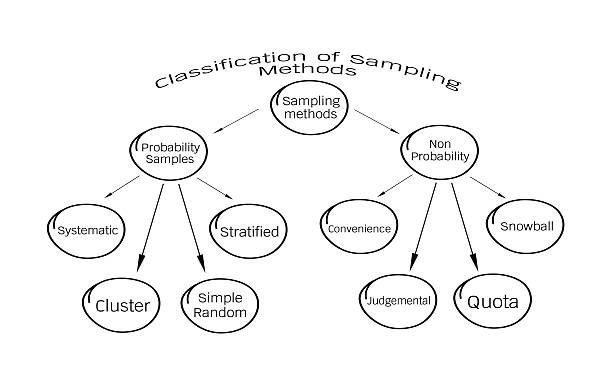An exploration of data collection methods: The Ultimate Guide to Sampling Techniques
Introduction
Sampling techniques have always been at the heart of research and data collection. Regardless of your occupation, comprehending the complexities of the data collection methods can be a great asset. This article aims to educate on the subject of the various sampling methods, how they can be applied in real-life, and their significance in today’s dynamic world.
Sampling Techniques: The Pillar of Research
Sampling Techniques serve as the foundation upon which reliable research is built. understanding the techniques differences lets you know whcih suits your study the most, thus enabling you to have a study that provides valid and reliable findings.
Why Sampling?
Sampling is efficient, cost-effective, and more practical than studying an entire population. It offers a snapshot of the larger group, making research manageable and results more applicable.
Types of Sampling Techniques

There are various different kinds of sampling methods, and every one of them have their benefits and challenges.
Random Sampling
One of the purest forms, random sampling ensures each individual has an equal chance of being chosen, eliminating biases.
Stratified Sampling
This method involves dividing the population into groups or ‘strata’, and random samples from each strata ensure a more comprehensive representation.
Cluster Sampling
Instead of selecting individual members, clusters or groups from the population are randomly selected, making large-scale studies more feasible.
Systematic Sampling
In this method, every nth member of the population is selected, ensuring a consistent spread throughout the study.
Quota Sampling
Similar to stratified sampling, quota sampling divides the population but instead of random selections, researchers intentionally pick specific individuals.
Applications of Sampling Techniques
From business to healthcare, sampling techniques play a pivotal role. They shape policy decisions, drive marketing strategies, and aid clinical studies.
Market Research
Businesses utilise sampling to gauge customer sentiments, identify market trends, and strategize product launches.
Epidemiology
Sampling aids in understanding disease outbreaks, helping policymakers decide on interventions.
Social Research
From understanding societal behaviours to demographic studies, sampling paints a clearer picture of community dynamics.

Common Pitfalls in Sampling
While sampling is efficient, it’s not without challenges. Biases, inadequate sample sizes, or selecting inappropriate techniques can skew results.
Overcoming Sampling Challenges
Equal amounts of methodological wisdom and experience is necessary for a sample to be successful. Ensuring diversity, using technology, and frequent validation can reduce errors.
Frequently Asked Questions
- What is the main objective of sampling?
The primary objective of sampling is to derive insights from a subset of the population, making it feasible to gather information without studying the entire group.
- How do I choose the best sampling method for my research?
The choice largely depends on the research objectives, available resources, and the nature of the population. It’s always advisable to consult with a statistical expert.
- Are there any digital tools to aid in sampling?
Absolutely! Today, there are numerous software solutions that automate the sampling process, ensuring efficiency and accuracy.
- Does sampling always represent the entire population accurately?
While sampling aims to offer a representative snapshot, it’s essential to be aware of potential biases and ensure the sample size is adequate.
- Is it possible to combine multiple sampling techniques?
Yes, researchers often combine techniques to compensate for the limitations of one method and enhance the overall sampling process.
- Why is random sampling considered the gold standard in many research scenarios?
Random sampling reduces biases and ensures each member of the population has an equal chance of being selected, making results more reliable and generalizable.
Conclusion
Sampling Techniques, when understood and employed correctly, can drastically enhance the quality of research. They provide a window into the vast world of populations and insights, enabling informed decisions. Sampling is a dynamic and evolving realm, and there is so much knowledge to learn and share, for novices and seasoned researchers alike.
External Links/ Sources:
